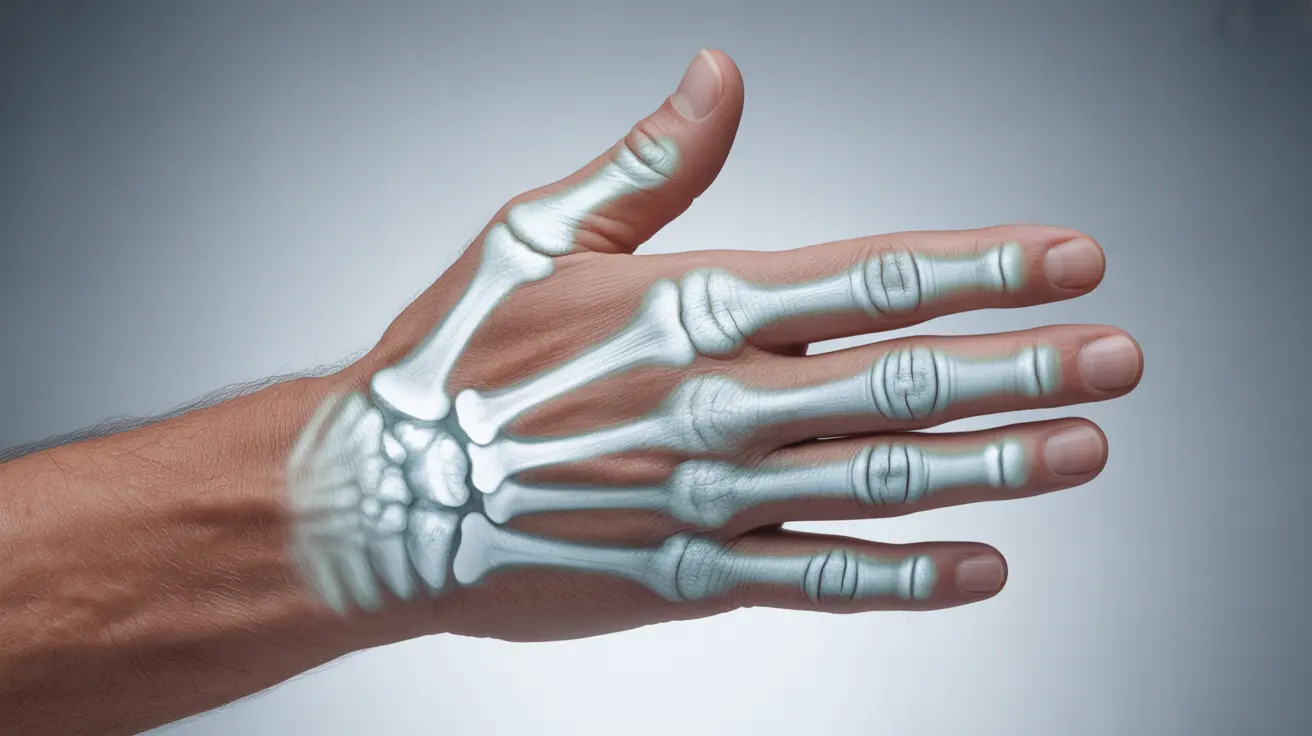Erosive osteoarthritis (EOA) represents a particularly aggressive form of osteoarthritis that primarily affects the hands, causing significant joint damage and functional impairment. This distinctive condition most commonly impacts middle-aged and older women, especially during or after menopause, and can significantly affect quality of life.
Unlike traditional osteoarthritis, erosive osteoarthritis is characterized by more severe inflammation and a potentially faster progression of joint damage. Understanding its unique features, symptoms, and treatment options is crucial for proper management and maintaining hand function.
Characteristics and Key Features of Erosive Osteoarthritis
Erosive osteoarthritis distinctively targets the hands, particularly the finger joints. The condition earns its name from the characteristic erosive changes visible in joint X-rays, where the bone appears to have been "eaten away" at the joint margins.
Key characteristics include:
- Bilateral joint involvement (affecting both hands)
- Predominantly affects finger joints, especially the distal and proximal interphalangeal joints
- More aggressive inflammation compared to traditional osteoarthritis
- Greater likelihood of joint deformity
- Increased risk of functional impairment
Recognizing the Signs and Symptoms
The symptoms of erosive osteoarthritis can be more intense than those of traditional osteoarthritis, often developing rapidly and causing significant discomfort.
Common Symptoms Include:
- Severe joint pain and tenderness
- Pronounced morning stiffness
- Noticeable joint swelling
- Redness around affected joints
- Reduced grip strength
- Joint instability
- Development of bony nodules
Diagnostic Process and Imaging
Diagnosing erosive osteoarthritis requires a combination of clinical examination and specialized imaging. Healthcare providers typically rely on X-rays to identify the characteristic erosive changes in the joints, which appear as a "gull-wing" or "saw-tooth" pattern.
Key Diagnostic Elements:
- Detailed physical examination
- X-ray imaging showing central erosions
- Blood tests to rule out other conditions
- Assessment of symptom patterns
- Documentation of functional limitations
Treatment Approaches and Management Strategies
Managing erosive osteoarthritis requires a comprehensive approach, combining various treatment modalities to address both symptoms and disease progression.
Current Treatment Options:
- Pain management medications
- Anti-inflammatory drugs
- Physical therapy and occupational therapy
- Joint protection techniques
- Splinting when necessary
- Regular exercise and strength training
- Heat and cold therapy
Prevention and Lifestyle Modifications
While erosive osteoarthritis cannot be completely prevented, certain lifestyle modifications may help manage symptoms and slow progression:
- Maintaining a healthy weight
- Regular gentle exercise
- Proper joint protection techniques
- Ergonomic adaptations
- Stress management
- Balanced nutrition
Frequently Asked Questions
What are the common symptoms that indicate erosive osteoarthritis in the fingers?
Erosive osteoarthritis in the fingers typically presents with severe joint pain, significant swelling, morning stiffness, and visible joint deformities. Patients often notice reduced grip strength, redness around affected joints, and the development of bony nodules on finger joints.
How is erosive osteoarthritis diagnosed and what imaging signs are typical for it?
Diagnosis relies primarily on X-ray imaging, which shows characteristic "gull-wing" or "saw-tooth" patterns in the affected joints. Doctors also perform physical examinations and may order blood tests to rule out other conditions. The presence of central erosions in multiple finger joints is a hallmark diagnostic feature.
What treatment options are available to manage pain and inflammation in erosive osteoarthritis?
Treatment options include pain medications, anti-inflammatory drugs, physical therapy, occupational therapy, and joint protection techniques. Some patients benefit from splinting, regular exercise programs, and various physical modalities like heat and cold therapy.
What causes erosive osteoarthritis, and why does it mainly affect women around menopause?
The exact cause remains unclear, but hormonal changes during menopause appear to play a significant role. The condition's prevalence in post-menopausal women suggests a connection between estrogen levels and joint inflammation. Genetic factors and mechanical stress may also contribute to its development.
How does erosive osteoarthritis differ from regular osteoarthritis in terms of symptoms and progression?
Erosive osteoarthritis typically progresses more rapidly and causes more severe inflammation than regular osteoarthritis. It specifically targets finger joints, causes more pronounced erosive changes visible on X-rays, and often results in greater functional impairment. The condition also tends to be more painful and causes more significant joint deformities.




